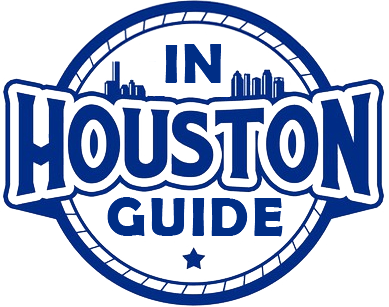Whether it’s elementary or graduate education, Houston schools provide a solid educational foundation. “Houston’s Outstanding Educational Opportunities” offers an instructive tour of the city’s educational institutions, providing valuable information such as profiles of school programs, school achievement results, private school data, and even an immunization chart to make sure Houston’s youngest students get a healthy start in life.
The educational opportunities in this region are mind-boggling, with everything ranging from cutting-edge children’s education programs to nanotechnology research at Rice University. No matter what parents and students are looking for, it is probably available within the Houston region. Everyone – from young children to seniors – can benefit from the area’s excellent educational opportunities.
Houston Children’s Educational Programs and Schools
Contents
Houstonians take their children’s education very seriously. Parents research school districts and many moves into the school district that best fits their needs – and with 66 different school systems to choose from and more than 390 private schools – the sky’s the limit for parents and their children. Additionally, parents, educators, and local leaders are always looking for ways to improve the system to better educate the children. The programs highlighted below are just a few of the hundreds of options available.

The Texas public school system celebrates its 170th birthday on Jan. 31, 2024, marking the anniversary of the Common School Law of 1854. Now, school attendance is compulsory for every child between the ages of six through 18.
The Texas Educational Code provides the framework for the current public education system, which is overseen by the Texas Education Agency (TEA) (tea.texas.gov) and the State Board of Education. Comprised of the commissioner of education and agency staff, the TEA is the administrative unit for primary and secondary education and among other duties, develops a statewide curriculum, administers statewide assessment programs, and rates school districts under the statewide accountability system.
In general, Houston area schools are divided into three levels: elementary schools for prekindergarten through fifth grade, middle schools for sixth through eighth grade, and high schools for ninth through 12th grade. State law requires that each school district employ enough teachers to maintain an average teacher-to-student ratio of one-to-20 and that a school district does not enroll more than 22 students per teacher per classroom from kindergarten through fourth grade. English language arts, fine arts, languages other than English, mathematics, science and social studies comprise the core curriculum.
Generally, teachers use numerical grades, with report cards sent to parents of elementary students every nine weeks and to parents of middle and high school students every six weeks. Students are promoted based on academic achievement, measured in certain years by statewide tests.
Charter Schools
In 1995, the Texas Education Code established the charter school concept – a type of public school operated under a state-granted charter or contract. TEA charter schools are autonomous, open-enrollment institutions that use state funding to offer innovative learning opportunities with greater flexibility than traditional public schools. Although subject to fewer state laws, charter schools still are monitored and accredited under the statewide testing and accountability system. Houston Independent School District (HISD) also charters schools that then operate with the approval of the HISD Board of Education and within the jurisdiction of HISD.
Houston School Districts
There are 66 school districts in the 10-county Houston area that includes Austin, Brazoria, Chambers, Fort Bend, Galveston, Harris, Liberty, Montgomery, San Jacinto, and Waller counties. With approximately 208,000 students, 30,000 employees (including more than 13,000 teachers) and 304 schools, HISD is the largest public school district in the area as well as in Texas and is the seventh-largest public school district in the country.
Texas Assessment of Knowledge and Skills
Texas public schools utilize the TAKS (Texas Assessment of Knowledge and Skills) test for measuring student competency in subject areas. With lengthier reading passages and more analytical math questions to calculate, the TAKS test is a more comprehensive skills test.
The TEA requires third graders to pass the reading portion to be promoted to the fourth grade. For more information and to view released tests, visit the TEA Web site at ( www.tea.state.tx.us ).
Although Texas is no stranger to state-mandated, standardized tests, the TAKS promotion standard is, in part, a response to the federal legislation known as the No Child Left Behind Act of 2001, which directs substantial reforms to state and local educational systems. Each state must measure public school student’s progress in reading and math every year from third to eighth grade and at least once from 10th through 12th grade.
With the implementation of the TAKS test, the State of Texas began a new system of rating schools in October 2004. This new system is based on TAKS scores and school completion rates. For in-depth information on area school districts, see the “Houston Area Independent School District Data 2003 – 2004” chart. On page 152, it lists the rating information on individual schools and districts in the Houston region.)
Child Care in Houston
Before their children are even born parents begin researching the different options available for child care. With so many dual-income families, parents in Houston generally look at a couple of different options. Nannies are a popular method of child care, as are Montessori schools, church-sponsored Mother’s Day Out programs and traditional daycares. When choosing a Montessori school, parents need to make sure that they understand and agree with that school’s teaching methods, because each school may be a little different.
Many parents in Houston opt for nannies because of the one-on-one attention their child receives along with the ability for the child stay in their own home. Another plus is that it typically allows parents to work on a more flexible schedule. The three most popular ways to find a nanny in Houston are word-of-mouth, nanny services, and local churches. No matter what method parents use, they need to make sure they always perform a background check on the potential caregiver. For more in-depth information on finding a nanny, log on to www.nanny.org.
From the cradle, many children spend their days at a daycare, and Houston has some of the best in Texas. Daycares and preschools offer children encouragement and early learning skills in healthy environments. At different stages, they learn and enjoy fun challenges, including everything from walking to finger painting to the Pledge of Allegiance to sharing to playing dress-up.
Before choosing a local daycare, parents may choose to educate themselves on the Minimum Standards For Licensed Child-Care Providers, which is a publication produced by the Texas Department of Family and Protective Services. This publication identifies important standards like the state-mandated ratio of caregivers to children within each age group and which caregivers need to be CPR certified. The publication may be found at www.dfps.state.tx.us/
Pre-K and Kindergarten in Houston
The moment children take their first small steps past the schoolhouse
threshold, Houston schools help them realize their potential. Today’s public school districts must provide kindergartens for children who are at least five years old on September 1 of the school year.
In 2004, HISD displayed its dedication to pre-school development by breaking ground on a $6 million dollar facility devoted entirely to pre-kindergarten education, with another facility in the works.
HISD and other area school districts begin their Gifted and Talented (GT) programs in kindergarten. For students qualifying for such programs, teachers offer accelerated lessons in subjects ranging from advanced math to Vietnamese.
Kindergarten also is the starting line for the area’s magnet school programs. Magnet schools focus on a subject area such as fine arts, math, and science or provide career-related training in a wide range of areas. In HISD schools, magnet programs are available for architectural and graphic design, aviation sciences, business administration, communications, computer technology, engineering professions, environmental science, foreign languages, health careers, and many more.
Yet while the lesson plans for their students may be ambitious, the teachers of Houston never fail to make learning fun. Educators hold pep rallies and pizza parties, like the ones held for the kindergarten class at Crespo Elementary School for obtaining public library cards, to deliver an excitement about education that is as important as a challenging syllabus.
Houston Elementary Schools
Between the Crayola ® Crayon boxes of kindergarten and the algebra of middle school lies elementary school, a formative era in any child’s education. Houston area educators realize the profound importance of this moment in a child’s life and devote their energy to preparing these students early for a promising future. Groundbreaking programs such as YES Preparatory School embody this commitment.
YES Prep is unlike any other school. Students apply to the YES prep school system from 15 different area school districts through a lottery system. If selected the student, along with the parents and the teachers, must sign a “Commitment to Excellence” contract. In doing so the student commits to a demanding class schedule (school hours are from 7:40 a.m. to 5 p.m. on weekdays along with classes in the summer and on certain Saturdays), agrees to do whatever it takes to make the grades and promises to enroll in higher education after they graduate. The teachers respond in kind to this dedication. YES prep provides cell phones to teachers so that its students can reach them well after school lets out.
For all the hours of long division and hard work that Houston schools can bring out in a student, the educators never forget to inspire. Houston’s world-class theatres and performing arts groups combine to offer area students performances that reflect their possibility and brilliance in themselves. In what has become an annual occurrence, the Hobby Center for Performing Arts puts on “Musiqa,” a music concert featuring classical and modern music performed by professional musicians. With outstanding resources available to them, the students of Houston receive an exceptional education in the basics: reading, writing, Franz Schubert, and arithmetic.
Middle Schools in Houston
Houston builds on primary school’s solid foundation by offering a rigorous curriculum in middle school. The Cypress Fair School District arranges a highly accelerated program for exceptional students. Its accelerated student program, similar to the Gifted and Talented program of HISD and surrounding school districts, offers a course track that boasts a class in Integrated Physics and Chemistry in 8th grade, two subjects usually reserved for high school upperclassmen. Yet this program is as flexible as it is ambitious, with opportunities available to dedicated students to advance into the accelerated program in summer school.
HISD also offers challenging High School-level classes in middle school. Students with demonstrated language abilities can start taking Advanced Placement (AP) Spanish in 8th grade. Eligible students from Johnston Middle School take on an AP course load meant to prepare high school juniors and seniors for college.
Houston High Schools
By matching an impressive syllabus with equally impressive resources and opportunities, Houston’s public high schools refine each student’s brilliance into incandescence. The Gifted and Talented programs culminate in high school as exceptional students prepare for college in AP classes. The magnet school program beginning in kindergarten also draws to a close with the region’s excellent magnet high schools. One such school is the High School for the Performing and Visual Arts (HSPVA). The school is the first of its kind in the Southwest and combines academic training with three hours per day of training in the arts – dance, instrumental vocal music, theatre arts, and visual arts.
To help students realize their potential, Houston schools are committed to providing the best possible resources and opportunities. The Deerpark School District boasts a video technology center that surpasses most Houston area universities. For detailed information on its technology center, go to www.matrox.com/video/press/
profiles/deerpark.cfm .
Local high school students also take advantage of Houston’s leadership in fields such as aerospace. NASA recently chose student’s from HISD’s Middle College for Technology Careers High School at TSU for a project called HUNCH, which stands for High School Students United with NASA to Create Hardware. In the project, local students view the current training hardware and will be building new hardware for NASA’s Space Station Payload Training Program. The students also receive instruction at the Johnson Space Center on techniques for building electronic circuit boards and electronic components.
Private Schools in Houston
Not all parents choose for their children to attend public schools, preferring instead to enroll them in private schools.
While attending a meeting recently, one mom passed along this advice, “I worked harder to get my child into a good private school than I did to get myself into law school.” Now, this does not mean that Houston has the most competitive private schools in the nation, nor does it mean parents need a second mortgage on their home or to dust off their family credentials. What it does mean is that parents need to do their research. There are more than 390 parochial and private schools in Houston for prekindergarten through high school, giving parents a wide selection from which to choose.
Houston’s private schools offer parents a wide range of options from parochial schools to secular schools to international schools. Some are strictly early learning while others educate children from prekindergarten through the 8th or 12th grades. And Houston’s private schools are located across the region from The John Cooper School in The Woodlands to Crème De La Crème in Sugar Land to The Kincaid School in the Memorial area or the St. John School in River Oaks.
Review the checklist and sidebar on page 154 to begin thinking about the different area schools. Then, log on to www.houstonprivateschools.org . This Web site gives parents detailed information such as how to apply, tuition fees, applicable placement tests, each school’s Web address and much more.
A few tips to know before choosing a private school in Houston include:
- Parents will need to visit the school and most probably will need to interview with the school. This will be a great opportunity for both the parents and the school to assure a good fit.
- Parents will need to complete the application forms for their child to be considered a candidate.
- Parents need to be prepared to have their children tested and will need to pay for those tests.
- Many schools encourage a certain level of parental involvement, so parents need to clearly understand what is expected of them.
From daycares to high schools, the Houston area offers parents a wide range of options designed to fit families’ educational, moral and religious beliefs and each child’s learning aptitudes and intelligence level. With a little research, parents will find the perfect fit for the whole family.
Colleges, Universities and Adult Education
Houston is the academic center of the Southwest, providing a very strong higher-educational infrastructure. With 313,644 students enrolled in more than 60 degree-granting colleges, universities, institutes, and technical colleges in the fall of 2004, no matter what a student may be looking for, Houston’s educational system can provide it.
A brief sampling of Houston’s academic institutions includes Rice University’s Center for Biological and Environmental Nanotechnology, the University of Houston’s Conrad N. Hilton College of Hotel and Restaurant Management, Baylor College of Medicine, Houston Community College System and Houston Graduate School of Theology.
Community and Junior Colleges
The Houston area community and junior colleges serve an important role in the area’s educational system. Two-year or university-parallel programs that lead to an associate’s degree in arts or science are the stepping stones to an undergraduate degree at a four-year institution. With the myriad of associate in applied science degrees and certification programs, they provide a ticket into the workforce as a trained specialist. In addition, their numerous continuing education programs and partnerships with the community and other post-secondary schools provide innovative programs for students of all ages.
Alvin Community College
A public, two-year comprehensive community college, Alvin Community College (www.alvin.cc.tx.us) is respected for its university parallel and occupational-technical programs. The main campus is situated on 113 acres in Alvin, with expanded service in Pearland at the Pearland College Center.
Brazosport College
Brazosport College (www.brazosport.cc.tx.us) serves the Brazosport area, which includes Clute, Lake Jackson, and Freeport, and the surrounding areas of West Columbia, Sweeny, Brazoria and Angleton. An open-door, equal-access higher education institution, Brazosport College offers academic preparation for four-year colleges, technical vocational-occupational training and continuing education courses. About 200 students graduate annually, and approximately 28,000 students enroll each year in credit and noncredit courses.
As an integral part of the community, Brazosport College offers Saturday Morning Enrichment classes designed for kindergarteners through fifth graders, a summer Kids’ College and Teen College, and adult life and learning programs for seniors.
College of the Mainland
Located in Texas City, 15 miles north of Galveston and 40 miles south of Houston, College of the Mainland (www.com.edu) serves the mainland portion of Galveston County. An open-door, comprehensive community college, it offers university-parallel programs, a variety of associate’s degree and certificate programs, continuing education programs, and service-oriented senior programs for residents over 55 years of age. Weeknights, an extension campus in League City offers college credit and continuing education classes. An average of 3,400 credit students have enrolled each fall semester for the past five years, and more than 10,000 continuing education students enroll each year.
Galveston College
A two-year, open-door community college, Galveston College (www.gc.edu) offers university-parallel programs, vocational-technical programs, and adult community education programs. In fall 2004, more than 2,300 credit students enrolled. About 10,000 noncredit students enroll annually.
Houston Community College System
Founded in 1971 as an open-admission, public institution of higher learning, the Houston Community College System (HCCS) (www.hccs.edu) has provided education and training to more than 1.2 million students. Currently, more than 37,800 students enroll each semester. As the largest community college system on the Texas Gulf Coast and the fourth largest in the United States, the five regional colleges – Central College, Northeast College, Northwest College, Southeast College and Southwest College – and their nearly 80 instructional sites serve the four quadrants of Houston to provide the full-range of workforce training programs, academic transfer courses and continuing education to a diverse student body.
Lee College
Located in Baytown, 25 miles east of Houston, Lee College (www.lee.edu) is a comprehensive community college. With about 6,300 students, Lee College offers instruction in a variety of academic, technical-vocational and continuing education classes as well as basic education courses for those seeking to improve reading, writing, arithmetic and language skills.
North Harris Montgomery Community College District (NHMCCD)
The fourth-largest community college district in Texas, NHMCCD (www.nhmccd.edu) serves 1,400 square miles in Harris and Montgomery counties. Composed of five districts (North Harris College, Montgomery College, Tomball College, Kingwood College and Cy-Fair College), NHMCCD also is affiliated with The University Center, which provides upper-level educational opportunities through partnerships with major universities.
Opening its doors in 1973 as the original college in the NHMCCD family, North Harris College (www.nhc.nhmccd.edu) offers more than 60 programs of study – Montessori infant and toddler teacher certification, associate degree nursing, interactive media and teacher certification – at its main campus and two full-service satellite centers.
Located on more than 110 acres of pine forest between The Woodlands and Conroe, Montgomery College (www. montgomery-college.com) enrolled 6,900 credit students in fall 2003. Programs include criminal justice, physical therapist assistant, biotechnology, vocational nursing, human services, computer information technology, radiologic technology and management.
A comprehensive community college located in Tomball on Texas 249, Tomball College (wwwtc.nhm-ccd.edu) offers traditional academic transfer programs, occupational programs, workforce training and community education courses. The veterinary technology program, one of only three such programs in the state, trains students as licensed veterinary technicians. Other programs of note include engineering technology, training for substance abuse or family counselors, nursing, accounting, agriculture, computer information systems and management/marketing.
Located on 224 acres, 26 miles north of Houston off U.S. 59, Kingwood College (www.kingwoodcollege.com) offers a full range of associate’s degree, certificate and workforce programs.
Cy-Fair College
(www.cyfair-college.com) joined the NHMCCD family on Aug. 25, 2003. The Barker-Cypress campus is situated on a 200-acre site at Barker-Cypress, and West Road, and the Fairbanks campus is located on U.S. 290 at Gessner and West Little York. This comprehensive college provides a full range of academic choices such as humanities, science, and fine and performance arts as well as degree, certificate and workforce development programs.
Located in The Woodlands, The University Center (www.tuc.edu) was developed by the NHMCCD in partnership with Prairie View A&M University, Sam Houston State University, Texas A&M University, Texas Southern University, University of Houston and University of Houston-Downtown. Partner universities offer courses at The University Center for students to complete degrees under programs that are unavailable at the home base of such universities but featuring the same standard of quality. The University Center currently offers 26 bachelor’s degrees and 26 master’s degrees in a wide range of subject areas, a pharmacy doctorate and a post-baccalaureate teacher certification.
San Jacinto College District
A comprehensive community college, San Jacinto College (www.sjcd.edu) serves six public school districts and communities north and south of the Houston Ship Channel. With three full-service campuses, the main campus is located at the junction of Pasadena, Deer Park and La Porte, and several extension centers are located in Clear Lake, Galena Park, Channelview and Sheldon. In addition to offering more than 100 fields of study, the college has unique instructional and training partnerships with businesses, industries and other colleges and universities.
The NASA Johnson Space Center sends astronauts to San Jacinto College for emergency medical training.
Wharton County Junior College
More than 5,800 students attend the state-supported Wharton County Junior College (www.wcjc.edu) . Situated on 90 acres in Wharton, with satellite campuses in Richmond and Sugar Land, the college offers associate’s degrees in arts and applied science and draws students from Wharton, Austin, Matagorda, Fort Bend, Colorado and Jackson counties. Its curriculum includes a two-year program for all pre-professional majors as well as vocational and technical courses.
Colleges and Universities
The Houston area also is home to several excellent four-year universities and graduate schools offering everything from a liberal arts degree to a doctorate degree in veterinary medicine.
DeVry University
Chicago-based DeVry University (www.devry.edu) provides undergraduate degrees in a variety of career-oriented business and technology fields at its main campus at Sam Houston Parkway North and Clay Road. Graduate degrees in business administration, accounting and financial management, human resource management, information systems management, project management, public administrations and telecommunications management are available through DeVry’s Keller Graduate School of Management (www.keller.edu) at the main campus and at a campus in the Galleria area.
Houston Baptist University (HBU)
Located in southwest Houston, HBU (www.hbu.edu) is a private, Christian, comprehensive, liberal arts college, with about 2,300 students. HBU offers a combined total of 42 undergraduate and 15 graduate programs through its colleges – general studies, business and economics, education and behavioral sciences, fine arts and humanities, science and mathematics and nursing.
Our Lady of the Lake University-Houston
With its main campus in San Antonio, Our Lady of the Lake University (www.ollusa.edu) offers a weekend degree program in Houston. The Houston campus offers junior- and senior-level courses required for bachelor’s degrees. Freshman and sophomore courses also are available on the weekends through a cooperative arrangement with North Harris College and Cy-Fair College.
Prairie View A&M University
The second-oldest institute of higher education in Texas, Prairie View A&M University (www.pvamu.edu) is located in Waller County, about 40 miles northwest of Houston. The university offers a wide range of undergraduate and graduate academic programs in areas such as architecture, agriculture, human sciences, arts and sciences, business, education, engineering, juvenile justice, and psychology. Integrated in 1963, the historically black Prairie View A&M University is known as one of the nation’s top producers of African-American engineers.
Rice University
Located near the Texas Medical Center and the historic Museum District, the private, independent Rice University (www.rice.edu) is the city’s oldest university. Rice first developed major strength in the sciences and engineering – strength the university continues to have. In 2004, U.S. News & World Report ranked Rice in the top 20 national universities for its undergraduate engineering programs as well as in the top 20 national universities overall. Rice offers more than 50 majors in areas such as engineering, natural sciences, humanities, social sciences, music, architecture and administrative sciences as well as research opportunities in more than 30 interdisciplinary research centers on campus.
Admission to join the ranks of the 4,000-plus students from all 50 states and around the country and the world is highly competitive. About 10 applicants vie for every freshman spot, and of those that make it, in the fall 2004 freshman class, 76 percent ranked in the top 5 percent of their high school classes.
Campus life at Rice is distinguishable from most other schools by its residential college system. All new students are randomly assigned to one of nine residential colleges, an affiliation they maintain throughout their undergraduate tenure at the school. Each residential college is self-supporting and becomes the students’ primary center for dining, studying, playing, networking and developing leadership skills.
Additionally, in December 2003, Rice University became the ninth university or system of higher education approved as a member institution of the medical center. This move has increased the opportunity for collaborations in research and teaching between Rice and the medical center, especially in the unfolding revolution at the intersections of nanotechnology, biotechnology and information technology.
Sam Houston State University (SHSU)
Founded in 1879, SHSU (www.shsu.edu) is located in Huntsville, 70 miles north of Houston. SHSU’s colleges of arts and sciences, business administration, criminal justice, and education and applied science offer 84 undergraduate, 47 master’s and four doctoral programs to its student body composed of 14,371 students.
In addition to an on-campus hotel and courtroom in the Criminal Justice Center, SHSU has two agricultural complexes, a rodeo arena, a student-operated cable television station and radio station, a student-published newspaper, a planetarium, an observatory and a weather station.
South Texas College of Law
Unrivaled in the number of state and national moot court and advocacy competitions its students win, South Texas College of Law (www.stcl.edu) , one of the country’s largest private law schools, is located on an entire city block in downtown Houston. About 1,290 full-time students attend, but coursework also can be completed on a part-time basis, making the program more accessible to working students.
The building housing South Texas College of Law also is home to the first and fourteenth branches of the Texas Court of Appeals and The Fred Parks Law Library, a recent addition that holds 450,000 volumes or volume equivalents.
Southern Methodist University (SMU)/Houston Campus
SMU (www.smu.edu) , located in Dallas, remains independent of state support and nonsectarian in its teaching. Offering courses leading to computer certification, SMU’s School of Engineering operates Advanced Computer Education Centers in a number of Texas cities, including Houston. The Perkins School of Theology, one of five university-related theological institutions of The United Methodist Church, offers master’s degrees and doctorates, with an extension program available in Houston.
Texas A&M University
Located in College Station, about 90 miles northwest of Houston, the state’s oldest public institution of higher education, Texas A&M University, opened its doors in 1876 as the Agricultural and Mechanical College. Although the initials “A” and “M” link the university to its past, the school’s curriculum has expanded to include agriculture and engineering as well as architecture, business, education, geosciences, liberal arts, medicine, science and veterinary medicine. In 2004, U.S. News & World Report ranked Texas A&M in the top 20 national universities for its undergraduate engineering programs and in the top five for its industrial, agricultural and nuclear engineering specialties. Texas A&M fields more than 16,000 applications for the entering freshman class, accepting about 6,300 students.
Texas A&M’s 10 colleges and branch campus offer 139 fields of undergraduate study, with 148 at the master’s level and 96 at the doctoral level. It also offers professional degrees, including the state’s only doctor of veterinary medicine program. Recently, Texas A&M launched a doctoral program in Hispanic studies.
The 5,200-acre main campus, one of the largest in the country, includes a learning resource center, art gallery, radio station, television station, weather station, observatory, cyclotron, wind tunnel, visualization lab, nuclear reactor, ocean wave pool and the George Bush Presidential Library and Museum.
Texas A&M began as an all-male military institution with required participation in the Corps of Cadets. Women now account for almost half the student body of about 45,000, and military training is optional. However, the Corps of Cadets and the “Aggie” traditions it established continue to shape the university’s culture.
Texas A&M University of Galveston (TAMUG)
The 100-acre campus of TAMUG (www.tamug.edu) , located in Galveston, is the maritime and marine branch of the Texas A&M University System. TAMUG offers specialized educational programs in marine curricula such as fish and game management, marine biology, marine science, maritime science, naval architecture, marine engineering, ocean engineering and transportation technology for about 1,400 students. The faculty members operate 17 research institutes, centers, programs and laboratories and have one of the highest average number of research dollars per faculty member of all the Texas public colleges and universities.
Texas Southern University (TSU)
Initially established in 1947 to educate African-Americans, the state-supported TSU (www.tsu.edu) , with its more than 10,800 students, is now one of the most ethnically diverse institutions in Texas. TSU has a graduate school and colleges for study in the areas of business, law, pharmacy and health science, education, science and technology, liberal arts and behavioral sciences, public affairs and continuing education. Doctorates are offered in law, pharmacy and education. Beginning in the 2002 – 2003 academic year, TSU’s College of Pharmacy and Health Sciences joined the medical center.
University of Houston System (UH System)
The UH System, comprised of four universities and two multi-institutional teaching centers, enrolls about 53,000 students and employs about 3,000 faculty members.
University of Houston’s (UH) (www.uh.edu) central campus, the largest of the campuses, offers more than 300 undergraduate, graduate and professional degrees to its more than 35,000 students hailing from all 50 states and around the world. Situated on 551 acres three miles from Houston’s downtown business district, UH has 13 colleges – architecture, business administration, education, engineering, honors, hotel and restaurant management, law, liberal arts and social sciences, natural sciences and mathematics, optometry, pharmacy, social work, and technology – and a learning resource center, art gallery, radio station, television station, observatory and more than 40 research centers. The advanced professional programs include architecture, law, pharmacy and optometry. UH also has the largest distance education program in the state, offering junior, senior and master’s courses.
Located in the heart of Bay Area Houston’s high-technology community, adjacent to the NASA Johnson Space Center, the University of Houston-Clear Lake (UHCL) offers bachelor’s degrees in more than 30 fields of study and master’s degrees in more than 40 fields from the schools of business and public administration, education, human sciences and humanities, and science and computer engineering.
The University of Houston-Downtown (UHD), located in downtown Houston in what is called a “vertical campus,” offers all classes under one, multistoried roof. Its five colleges provide a wide range of undergraduate studies. Master’s programs in criminal justice and teaching also are available.
The University of Houston-Victoria (UHV) offers more than 30 graduate and undergraduate degree programs in the schools of arts and sciences, business and education. UHV primarily serves commuting students from Victoria and surrounding counties and collaborates with other UH System institutions to offer degree programs at a number of off-campus sites in the region.
The University of Houston System at Sugar Land and the University of Houston System at Cinco Ranch offer more than 35 degrees through partnerships with area community colleges and the four UH System universities.
University of St. Thomas
Located in the city’s historic Museum District, the University of St. Thomas (www.stthom.edu) was founded in 1947 by the Basilian Fathers, a congregation of priests devoted to teaching. Although a Catholic university, St. Thomas opens its doors to all religious faiths. At its foundation, this private university offers a liberal arts undergraduate education and selected graduate degrees taught by excellent professors. Eighty-nine percent of the full-time faculty at St. Thomas has the highest degree in their field.
In fall 2003, enrollment included 4,875 students representing 32 states and 50 countries. The university has four schools – business, education, arts and sciences and theology – as well as centers for business ethics, international studies, faith and culture, Irish studies and Thomistic studies.
Medical and Health Science Schools
Houston is fortunate to have in its midst the world-renowned Texas Medical Center. The medical center’s 43 not-for-profit member institutions see more than 5.2 million patients each year, spend more than $700 million on research activities and enroll about 70,500 participants in educational and professional courses. Not only does the medical center provide this city with some of the best health care available in the world, it provides a hub for educating many of its future doctors, dentists, nurses and other health care specialists.
Baylor College of Medicine
Baylor College of Medicine (www.bcm.tmc.edu) , the first institution to locate in the medical center, is the only private medical school in the Southwest. Each year, Baylor physicians see more than 135,000 inpatients and more than 1.7 million outpatients from around the world in its teaching hospitals and clinics. The college has 25 departments and more than 90 research and patient-care centers.
It received 4,208 applications for the 168 first-year spots available for its 2004 entering class. Medical students and resident physicians in the Graduate Medical Education training program learn and work in its clinics and six affiliated teaching hospitals, which include The Methodist Hospital, Texas Children’s Hospital, The Institute for Rehabilitation and Research, St. Luke’s Episcopal Hospital, Michael E. DeBakey Veterans Affairs Medical Center and Ben Taub General Hospital.
Prairie View A&M University College of Nursing
Five students enrolled in the first class when Prairie View A&M University College of Nursing (www.pvamu.edu) began as a two-year program in 1918. The college has been supplying nurses for the State of Texas ever since, with its program growing to a state- and nationally-accredited baccalaureate program. The College of Nursing moved to its Houston location in the medical center in 1968. Although the college currently occupies temporary space at 1801 Main, a new 12-floor structure is under construction at 6436 Fannin, with completion scheduled this year. The new 118,000-square-foot structure will allow the college to double its student capacity to up to 500 students.
Texas A&M University’s Institute of Biosciences and Technology
Located in the medical center, the Texas A&M University’s Institute of Biosciences and Technology (IBT) (www.ibt.tamushsc.edu) is a part of the Texas A&M University system Health Science Center. Graduate and postdoctoral education is conducted at IBT in cooperation with other members in the A&M system.
Unique to the nation in combining medicine and agriculture, IBT is dedicated to being a leader in biomedical research and biotechnology related to meeting society’s demands for a safe and healthy food supply and for developing technologies for the prevention and treatment of human and animal diseases. Key research areas include cancer biology and nutrition, environmental and genetic medicine, inherited diseases arthritis, bone diseases, and structural biology.
Texas Woman’s University Institute of Health Sciences
The Texas Woman’s University of Health Sciences (www.twu.edu/houston) produces more health care graduates than any other Texas institution and established one of the first doctoral nursing programs in Texas. It is the only institution in the Southwest to offer a Ph.D. in physical therapy, and its occupational therapy program is the largest in the nation. The Houston campus is located in the medical center and now has more than 1,000 students enrolled in the various health science programs seeking bachelor’s, master’s or doctorate degrees in fields such as health care administration, occupational therapy, physical therapy, nursing, nutrition, and library and information studies.
The University of Texas Health Science Center at Houston (UT-Houston)
UT-Houston (www.uth.tmc.edu) – the most comprehensive academic health science institution in The University of Texas System as well as in Texas – also is located in the medical center. Embracing its comprehensive approach to health, UT-Houston brings together six schools – the Dental Branch, the Graduate School of Biomedical Sciences, the School of Public Health, the Medical School, the School of Nursing and the School of Health Information Sciences – as well as a number of special programs, entities and institutes such as the UT Harris County Psychiatric Center and the Institute of Molecular Medicine for the Prevention of Human Disease. Although UT-Houston offers primarily graduate-level training, undergraduate programs in nursing and dental hygiene also are available.
The University of Texas Medical Branch of Galveston
The oldest medical school in Texas, The University of Texas Medical Branch of Galveston (UTMB) (www.utmb.edu) opened in 1891 with only 23 students, 13 faculty and two buildings. It now has more than 2,800 students and 1,600 faculty, occupies 85 acres and has 54 major buildings on its main campus, including six hospitals, an extensive network of campus- and community-based clinics, a Level I trauma center, four schools (School of Medicine, School of Nursing, Graduate School of Biomedical Sciences and School of Allied Health Sciences), two institutes (Marine Biomedical Institute and Institute for the Medical Humanities), an affiliated Shriners Burns Hospital and state-of-the-art research facilities.
UTMB has an established reputation for research into infectious diseases and recently constructed a National Containment Laboratory at the highest biosafety level (BSL4), one of only a handful of such labs in the country and the first such lab on a university campus. A BSL4 lab allows scientists to study and develop countermeasures for biological agents that could be used by bioterrorists. In 2003, UTMB was one of only two locations in the country selected by the National Institutes of Health to receive a lucrative grant to help build a second BSL4 lab within the next five years.
More Post-Secondary Educational Options
Houston has a wide selection of specialty schools and training institutes, some of which offer degrees and others that provide certification for employment in specialty fields. The following are just a few of the available alternatives:
American College of Acupuncture and Oriental Medicine – master’s degree in oriental medicine, with optional subspecialty in pain management.
Art Institute of Houston – diplomas, associate’s and bachelor’s degrees in culinary arts, graphic design, multimedia and Web design, restaurant and catering management, interior design, and media arts and animation.
Center for Advanced Legal Studies – paralegal certificate and associate of applied science degree programs.
College of Biblical Studies-Houston – associate’s and bachelor’s degrees in biblical studies.
Commonwealth Institute of Funeral Services-Houston – certificates and associate’s degrees in mortuary science.
Houston Graduate School of Theology – master’s degrees in arts, theological study, and divinity, and a doctorate in ministry.
ITT Technical Institute-Houston – associate’s degrees in computer pro- programming, electrical/electronic engineering technology, Internet and system/networking/LAN/WAN management.
MTI College of Business and Technology-Houston – certificates, diplomas, and associate’s degrees in computer maintenance technology and secretary science.
National Institute of Technology – diploma programs in medical assisting, medical insurance billing/coding, dental assisting, pharmacy technician, electronics and computer engineering technology, and network systems support.
Remington College-Houston Campus – associate degrees in business information systems, com puter networking systems, technology and criminal justice, diploma programs in medical assisting, medical insurance, coding, and pharmacy technician.
Texas Chiropractic College – doctorate degree in chiropractic and
bachelor’s degree in human biology and post-graduate and continuing education programs.
Westwood College of Aviation Technology Houston – associate’s degree in aircraft mechanic/airframe and aircraft mechanic/power plant.
University of Phoenix – Houston Campus – undergraduate and graduate degrees in business administration, management information systems/business data processing, and management science.
Continuing Education
For those who want to keep their minds young, Houston’s continuing education programs are available at most community colleges and universities previously discussed, including Rice University, the UH System universities, and the Houston Community College System. In addition, other venues offer courses for people interested in an almost unlimited number of subjects. Here are a few favorites:
Leisure Learning – more than 500 noncredit courses ranging from rock climbing to cake decorating, Russian to hypnosis, and public speaking to making friends.
Inprint, Inc. – writing workshops in fiction, poetry, personal essay, and novels led by local authors.
Area museums – periodic lectures and classes for children and adults.
Central Market and Sur La Table – cooking classes and demonstrations.
SSQQ – dance classes in swing, western, salsa, ballroom, and West Coast partner dancing.
Whether it is compulsory to develop a career or just for fun, Houstonians of all ages – from the cradle to the grave – indeed have outstanding educational opportunities.







